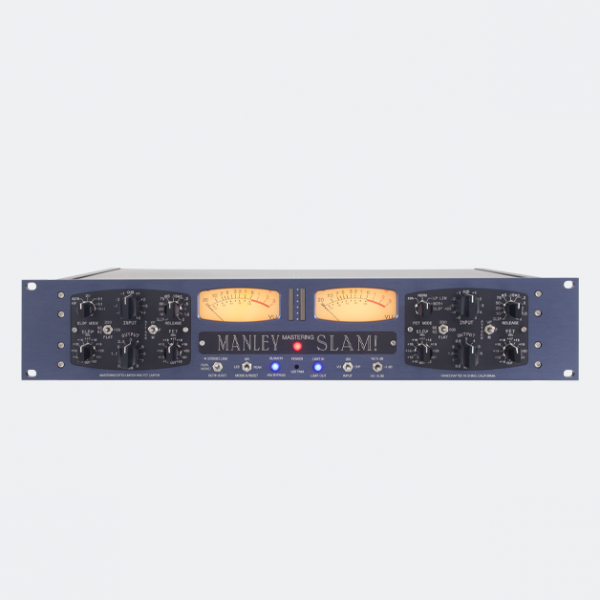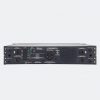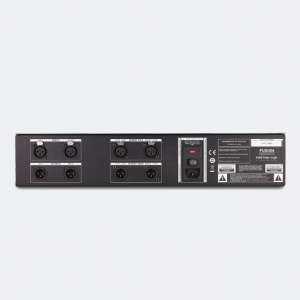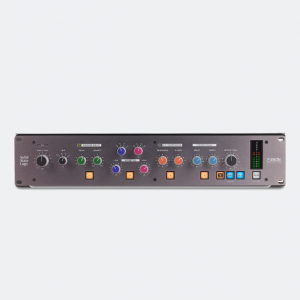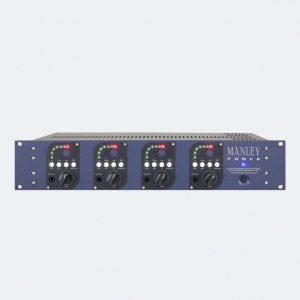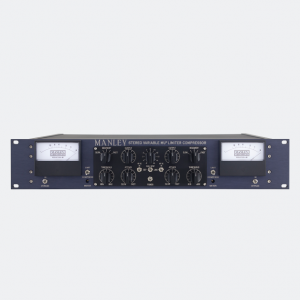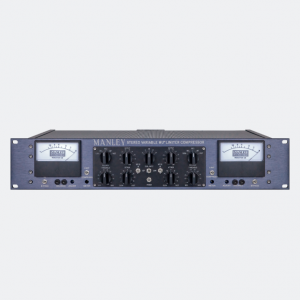Description
Proudly from our beginning, we at MANLEY LABS have been closely involved with numerous mastering facilities around the world. For these most demanding engineers in our industry, we have created specialised products such as our all-tube tape repro head amps, digital converters, high-powered vacuum tube monitor amplifiers, through to custom monitoring consoles, all the way up to complete facility design and installation.
DIFFERENCES AND FEATURES
First off: no microphone preamps. You mastering engineers certainly don’t need those. The mic pre and input select switch are removed and the switches become dedicated “mode” switches one each for the ELOP and the FET limiters.
1) The ELOP limiter gets more Ratios – 10:1, 5:1, 3:1, 2:1 and something new called AutoHF which starts off as a 1.5:1 ratio and increases gradually to 10:1 for highs. This is something like a de-esser, and of course can work with the ELOP SC toggle at 200Hz for even more effect.
2) The FET limiters get new modes that are 50%, NORM, LP Lim, BOTH, and CLIP.
The “50%” setting mixes in the straight signal to the limited signal which is often difficult to do in a mastering environment and because the FET sidechain ‘reads’ off the output, the amount of gain reduction doubles. It resembles halving the FET ratio but is cleaner due to the mix.
The “LP Lim” setting only comes into play for hot signals and reduces the depth of gain reduction for high freqs. This translates to – hot signals + moderate gain reduction = brighter, more present signal, less distortion, more balls. This mode allows more high frequencies to pass through without being limited.
The “CLIP” setting introduces a fixed threshold clipper circuit set up about -2 dB DFS or +18 dBv at the XLR. Within normal usage “CLIP” generally prevents outputs from passing beyond +18 dBv, and 97% of the time, clips in a controlled fast-recovery manner before a converter would (in generally a less than desirable sounding way).
Finally, the “BOTH” setting on the FET limiter engages both the “LP Limit” and the “CLIP” functions at the same time. This might be appropriate for metal and projects demanding intense volume. The “BOTH” mode is designed for situations where extreme processing and loudness is required but where attack, brightness and aggressiveness needs to be preserved or enhanced.
3) The LEFT blue erstwhile-“limit” button becomes a master stereo LIMIT bypass switch here in the Mastering Version. When it is not engaged, it becomes a true hard-wire bypass (This was not possible on the mic preamp regular version obviously).
4) The Right blue button becomes the DAC select switch (stereo).
5) The what-was-the-Phantom toggle on the back of the unit becomes the Unbalanced 1/4″ jack input select in this new mastering version.
6) There are no pots on the faceplate of the Mastering Version of the SLAM! All of the knobs in the Mastering Version are discrete detented switches in mostly 1 dB steps, with some appropriate 1/2 dB and 2 dB steps, right where they should be.
More than that, we really like the way it works and sounds and we generally prefer it to the non-mastering version for stereo tracks. There is a lot less fiddling involved to maintain L/R balances and the new modes are subtle but fun. It is easy to make just about anything sound better.
